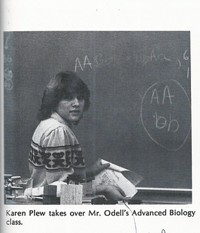Advertisement
Grab your lab coat. Let's get started
Welcome!
Welcome!
Create an account below to get 6 C&EN articles per month, receive newsletters and more - all free.
It seems this is your first time logging in online. Please enter the following information to continue.
As an ACS member you automatically get access to this site. All we need is few more details to create your reading experience.
Not you? Sign in with a different account.
Not you? Sign in with a different account.
ERROR 1
ERROR 1
ERROR 2
ERROR 2
ERROR 2
ERROR 2
ERROR 2
Password and Confirm password must match.
If you have an ACS member number, please enter it here so we can link this account to your membership. (optional)
ERROR 2
ACS values your privacy. By submitting your information, you are gaining access to C&EN and subscribing to our weekly newsletter. We use the information you provide to make your reading experience better, and we will never sell your data to third party members.
Education
Career Ladder
Career Ladder: Eric Breitung
Networking helped this industrial chemist transition into a career at the Metropolitan Museum of Art
by Linda Wang
September 5, 2016
| A version of this story appeared in
Volume 94, Issue 35
1990
Joined the military to pay for college
“I thought I wanted to be a doctor, so I enlisted as a medic” in the National Guard. At the same time, Breitung entered Illinois State University as a premed student. “But then I started taking chemistry, and I was won over.” He went on to get a Ph.D. in physical chemistry from the University of Wisconsin, Madison. All the while, he cultivated an early interest in art. “I befriended several artists in the M.F.A. program, and we put together a group art show in the student union.”
1999
First job in industry

Upon receiving his Ph.D., Breitung got his first chemistry job as a research scientist for General Electric in Niskayuna, N.Y. “I became very interested in coatings and started working on coatings and thin films.” Meanwhile, he also volunteered at a local museum creating scientific exhibits.
2006
Changing careers from coatings to conservation
After seven years at GE, Breitung wanted to move to New York City. When he saw an ad in C&EN for an art conservation scientist at the Metropolitan Museum of Art (the Met), he applied: It was a perfect match for his interests in science and art. Breitung didn’t get the job, but he contacted department head Marco Leona to find out how he could work toward this type of job. “He was willing to offer me a fellowship for a year at a huge pay cut from industry.” Breitung took leave from GE.
2009
Working his way through Washington
Breitung returned to GE for seven months before moving to Washington, D.C., to take a job as an art conservation scientist at the Smithsonian. In that position, he identified dyes on textiles from Central Asia. In 2010, he got a job as a senior scientist at the Library of Congress, where he examined materials in magnetic tape and other media. Along the way, he kept in touch with Leona, who became a friend and mentor.
Today
Fulfilling his dream at the Met
In 2015, Leona contacted Breitung when he had an opening at the Met. “He thought I had the right qualifications for the job, and he invited me to apply,” Breitung says. As a senior research scientist for the Met, Breitung is responsible for the chemical environment in the museum. “Whenever anything comes into the building and it might be used near the art, I vet it to make sure it’s okay to have next to the art.” He says that broadening his horizons was one of the best decisions he has made in his career. “I’m very happy I’m doing this job.”
Know a chemist with an interesting career path? Tell C&EN about it at cenm.ag/careerladder.
Check C&ENJobs for the latest job listings, as well as featured videos on what chemists do.







Join the conversation
Contact the reporter
Submit a Letter to the Editor for publication
Engage with us on Twitter